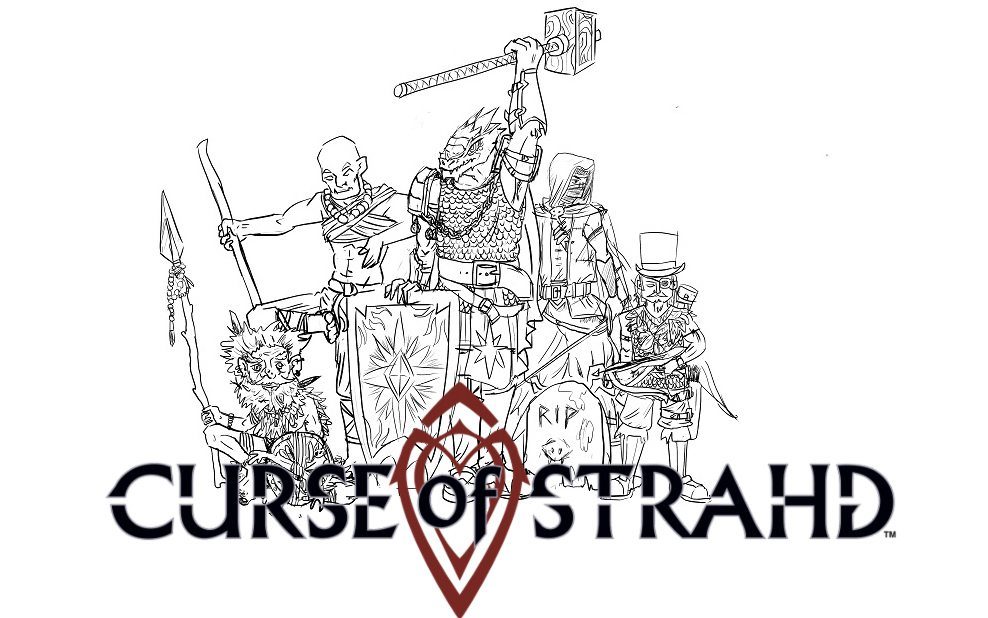Capture the best photos of the birds-of-paradise—and be sure to get them published—to be named the Global Geographic Photographer of the Year!
What Is Birdwatcher?
Birdwatcher is a set-collection card game for 2 to 4 players, ages 10 and up, and takes about 25–60 minutes to play. It’s currently seeking funding on Kickstarter, with a pledge level of $39 for a copy of the game.
Birdwatcher was designed by Zakir Jafry and published by Oni Press, with illustrations by Lauren Helton.
New to Kickstarter? Check out our crowdfunding primer.

Birdwatcher Components
Note: My review is based on a prototype copy, so it is subject to change and may not reflect final component quality. The finished game will include boards for the Academy, Jungle, and Clearing (the prototype just had nameplates), and will have wooden bug tokens in addition to cardboard. Stretch goals may affect the final component listing as well. Note that the prototype had a First Player card, seen in the photo above, but I’m not sure if that will be included in the final version.
- Academy, Jungle, and Clearing boards
- 73 Bird cards
- 16 Publication cards
- 25 Bug tokens
- 4 Player Trees
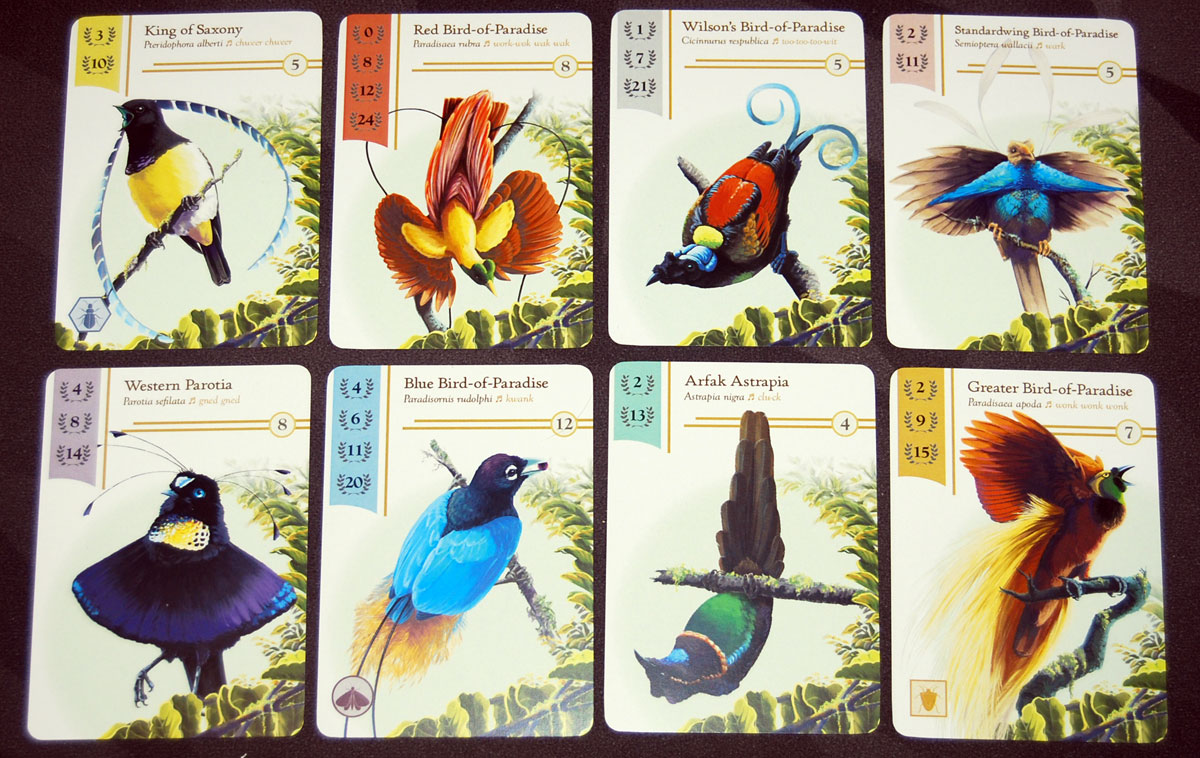
The bird cards, illustrated by Lauren Helton, are quite lovely and show off the surprising variety of birds-of-paradise. The cards themselves are fairly simple: aside from the illustration, the “flavor” includes the common and Latin name and what the bird’s call sounds like. The card also includes the point value (with laurel wreaths), the number of that card in the deck, and possibly an insect icon in the bottom left corner.

The publication cards have different types of scoring conditions or special effects when played, and also have a number of book icons at the lower left. Each publication has a title and a quote as well, for flavor. I think it’d be nice if the title itself were larger, since the word “Publication” at the top of each card doesn’t seem necessary.
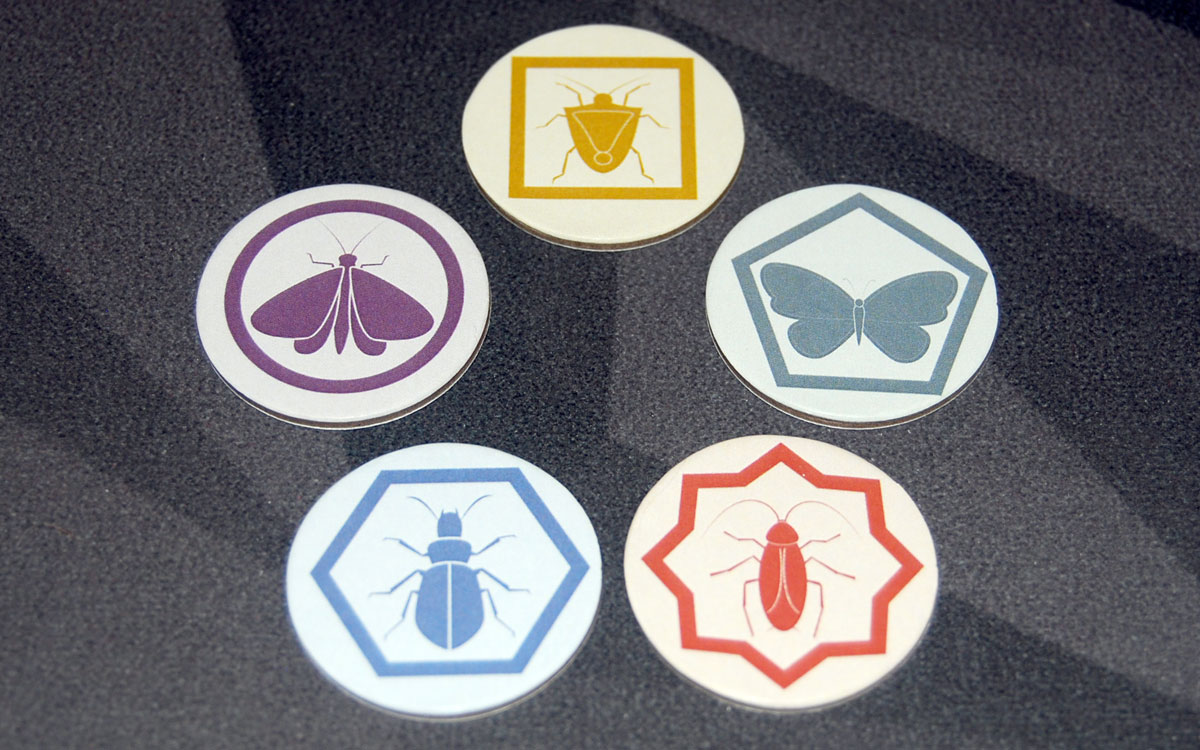
The insect tokens are pretty simple, but I like the fact that each one also has a unique shape, making them even more easily distinguishable beyond the insect shapes themselves. The wooden tokens in the finished version will be natural wood colored with a black icon, with the tokens themselves in those shapes.
The tree cards serve as a player aid, listing all the different actions available and also providing an outline of the end-game scoring. They’re also used to mark the birds that are in your tree and the cards in your journal.
How to Play Birdwatcher
You can download a draft of the rulebook here.
The Goal
The goal of the game is to score the most citation points by collecting photos of birds and publishing in journals.
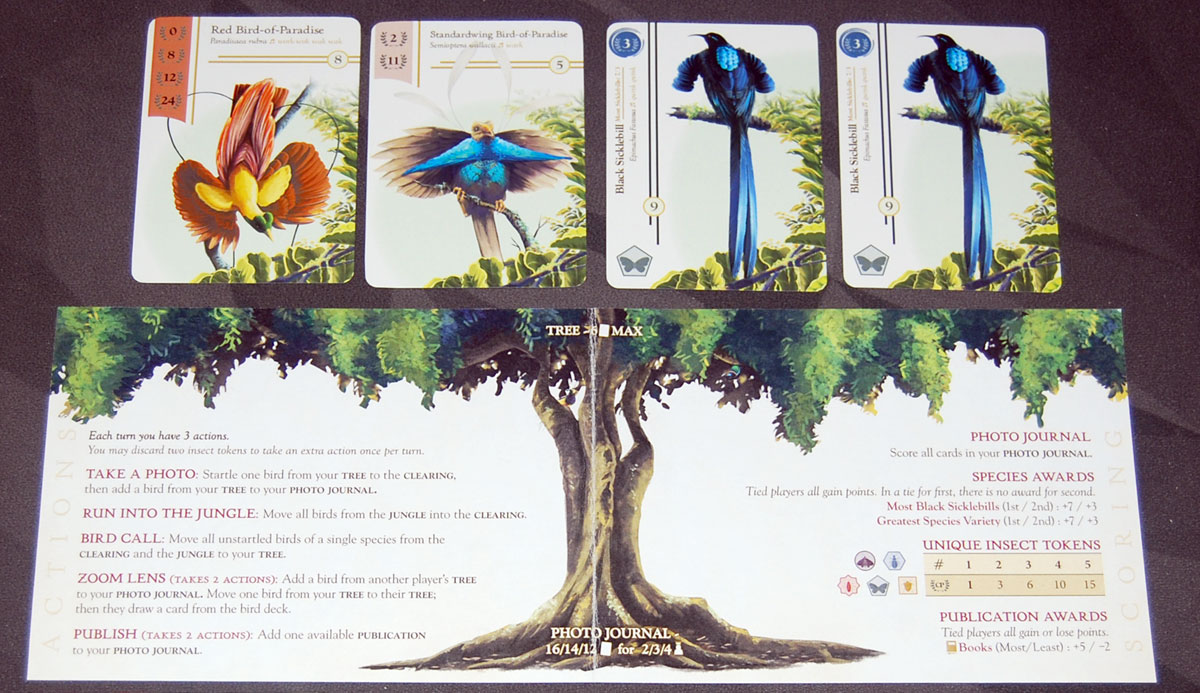
Setup
Give each player a tree. Shuffle the bird cards (separating out the rare hybrid birds, which have a different card back) and deal 4 birds to each player, which are placed above the tree. Then, shuffle the rare birds into the deck. Reveal 3 birds in the Jungle.
Shuffle the publications and reveal 3 in the Academy. Set the bug tokens nearby in a supply.
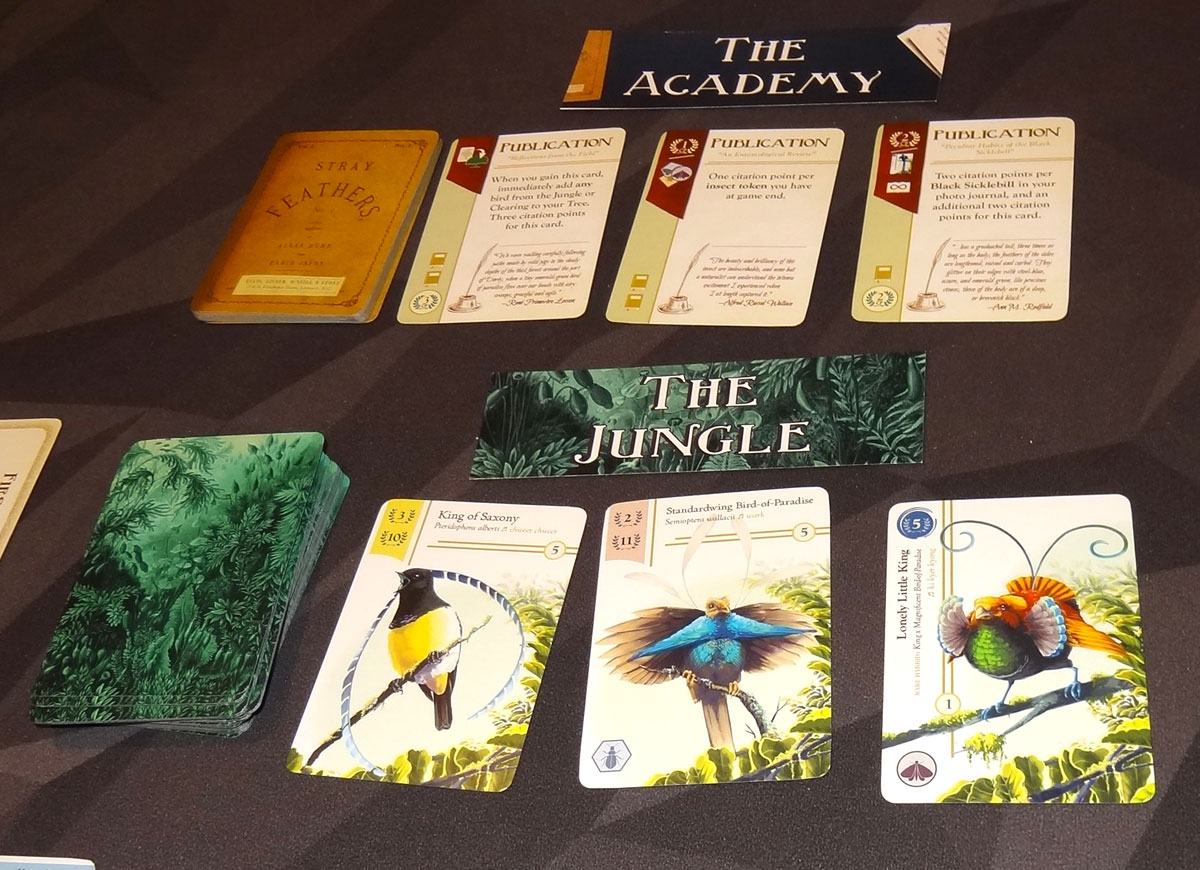
Gameplay
Each turn, you have 3 action points to spend on the following actions:
- Take a Photo: Startle 1 bird from your tree into the Clearing, and then add a bird from your tree to your photo journal (below your tree).
- Run into the Jungle: Startle all birds from the Jungle into the Clearing.
- Bird Call: Move all unstartled birds of one species from the Clearing and Jungle to your tree.
- Zoom Lens (2 action points): Take a bird from another player’s tree and add it to your photo journal. Move one bird from your tree to their tree. That player also draws one bird from the bird deck and adds it to their tree.
- Publish (2 action points): Take one available publication from the Academy and add it to your Photo Journal.
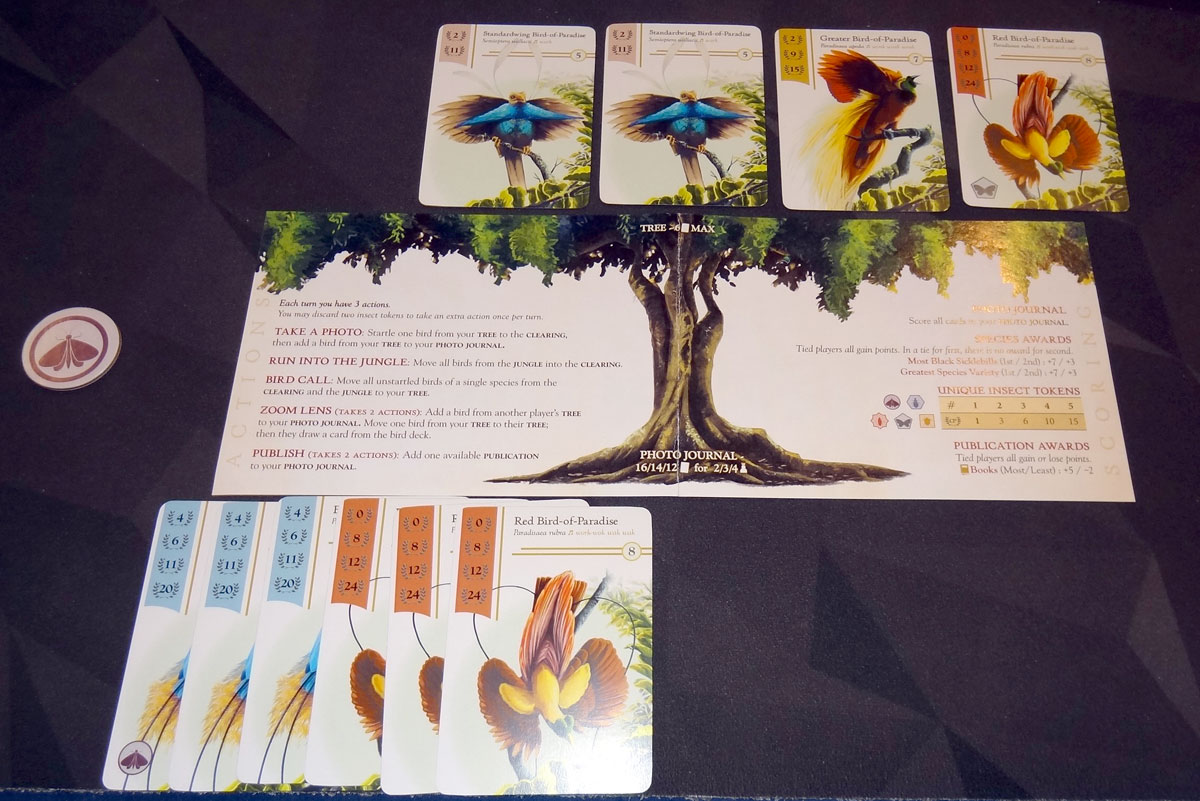
When you add a bird to your photo journal that has an insect icon on it, take the matching token from the supply. Once per turn, you may also discard 2 insect tokens to get an extra action point.
You have a hard limit of 6 birds in your tree. If you would ever take a card for your tree but it is already full, you don’t take the card.
Game End
When a player reaches a particular number of cards in their photo journal (based on player count), that triggers the end of the game. Finish that round so everyone has had the same number of turns, and then the game ends.
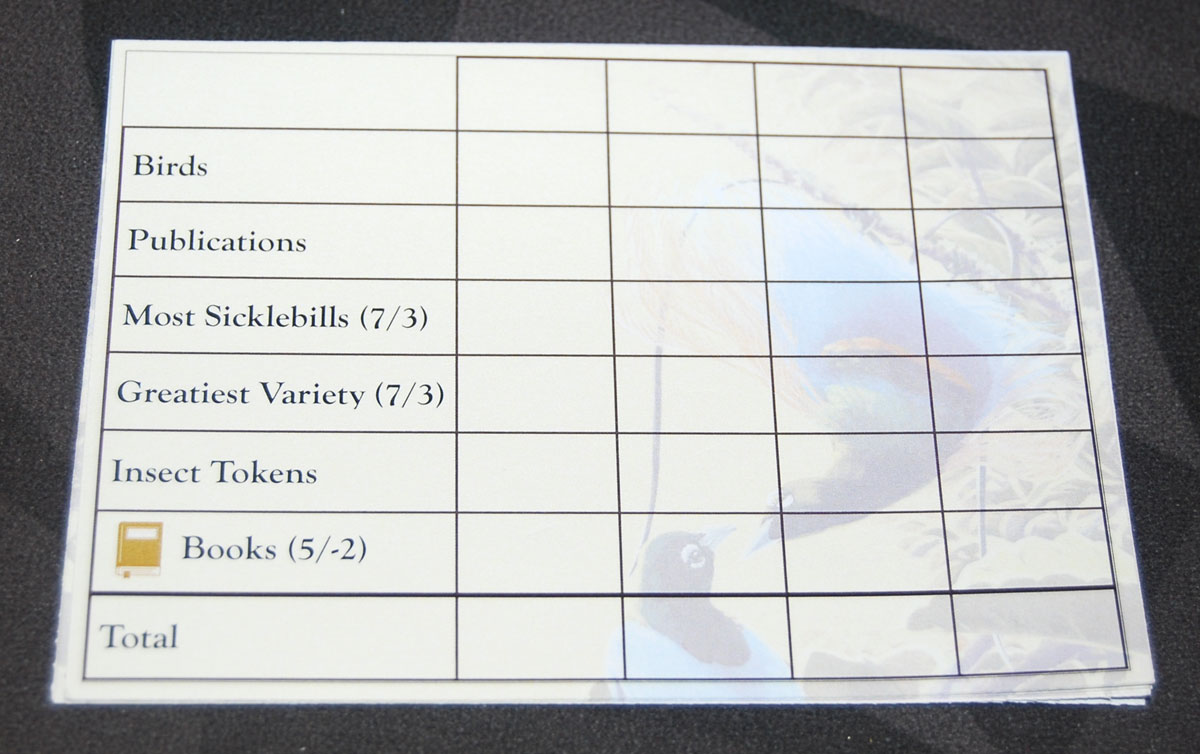
You score points for:
- Cards in your photo journals
- Species awards:
- Most Black Sicklebills (7 points for 1st, 3 points for 2nd)
- Greatest Species Variety (7 points for first, 3 points for 2nd)
- Unique insect tokens (only score for 1 set, no duplicates)
- Publication awards: 5 points for most books, -2 points for fewest books
The highest score wins, with ties going to the player with the most birds left in their tree. After that, the players will have to compete with convincing bird calls for the tiebreaker.
Why You Should Play Birdwatcher
Oni Press is perhaps better known for comic books than tabletop games, at least until recent years, when it has published several games based on those comic books in partnership with Renegade Games. There have been kids’ titles like The Tea Dragon Society and Aquicorn Cove, a miniatures battle game based on the Scott Pilgrim series, and a trick-taking game based on the weird egg Gudetama.
Birdwatcher is Oni’s first game that doesn’t draw from their comics—that’s what first caught my attention, when I saw it listed in one of their mostly comics-based email newsletters—but it may just be the start of expanding their catalog of games. Steve Ellis, who for many years owned one of the larger game stores here in Portland, now heads up Oni Games and is involved in developing the games. He’s got a few of his own published titles, and knows a lot about games from both the industry side and the hobby side. Ben Eisner is another name that might be familiar—he’s one of the designers of March of the Ants, The Grimm Forest, and Tidal Blades, and he’s also one of the developers at Oni Games (and for Birdwatcher). So although Birdwatcher is Zakir Jafry’s first published game, there’s a solid team behind it.
Birdwatcher is largely a set collection game: most of the birds are worth more points if you collect more than one of the same bird. However, unlike many games in this genre, the order you collect them matters. The King of Saxony is worth 10 points for a pair—but only if the pair is in sequence in your photo journal. If you stopped to get some other photos in between, then the King of Saxony is worth only 3 points apiece.
For some birds, you’ll want to get 4 of the same card—and that’s where things get tricky, because everyone else can see what you’re trying to do. There are several ways to try to interfere with somebody else—you might run into the jungle, scaring off birds that your rival is trying to collect, so that they get covered up by other birds in the clearing. Or, depending on what’s happening in your own photo journal, you might even use your zoom lens to steal birds from somebody else’s tree.

That can be particularly effective in the case of the rare birds—these are unique hybrid birds-of-paradise that are worth points by themselves. It’s definitely a risk to call one of these to your tree and let it sit there for a round. Chances are, by the time it’s your turn again, it’ll be in somebody else’s journal.
Birdwatcher also has a lot of trade-offs for players to think about. Each time you take a picture, moving a bird from your tree to your photo journal, you startle another bird in your tree, which flies away to the clearing. It’s a constant back-and-forth, attracting enough birds to your tree so that you have extras to spare. Since your tree is limited to 6 birds, though, you can’t pile up too many, either. There’s some luck involved, of course: if there are a bunch of the same bird in the jungle and clearing, one bird call can bring them all to your tree at once, but there’s no guarantee you can set that up when you need it.
While you’re out there capturing photos, don’t forget about publishing, either! I mean, if your photos and notes aren’t appearing in prestigious journals, how will anyone know what an awesome photographer you are? The publications have a variety of effects. Some will score points based on what other things immediately precede them in your journal; others will award points based on meeting certain criteria by the end of the game; still others may have special effects that trigger as soon as they’re placed in your journal. But it’s also important to note the number of books on the publication card, which is different from the point value. At the end of the game, the person with the most books gets bonus points, and the person with the fewest suffers a penalty. Publish or perish, my friend.

Birdwatcher is a pretty light game: it’s easy to set up and learn, since there are only 5 different actions you can take on your turn. The challenge is figuring out what to focus on to score the most points: is it better to try to finish this set of 4 birds, or do I need to grab that publication before somebody else does? Should I hang onto these insect tokens for the set bonus, or can I earn more points if I spend them for extra actions? How many Black Sicklebills does that other player have—should I try to outnumber them? Although nobody can affect your journal, there are plenty of opportunities to steal birds or publications away from other players if they haven’t locked them down in their journals yet.
Overall, it’s a nicely streamlined game that gives you some tough decisions to make (you always wish you had just one more action to spend), and with a fun theme and beautiful illustrations to bring that theme to life. For more information or to make a pledge, visit the Birdwatcher Kickstarter page!
Click here to see all our tabletop game reviews.
![]() To subscribe to GeekDad’s tabletop gaming coverage, please copy this link and add it to your RSS reader.
To subscribe to GeekDad’s tabletop gaming coverage, please copy this link and add it to your RSS reader.
Disclosure: GeekDad was loaned a prototype of this game for review purposes.




